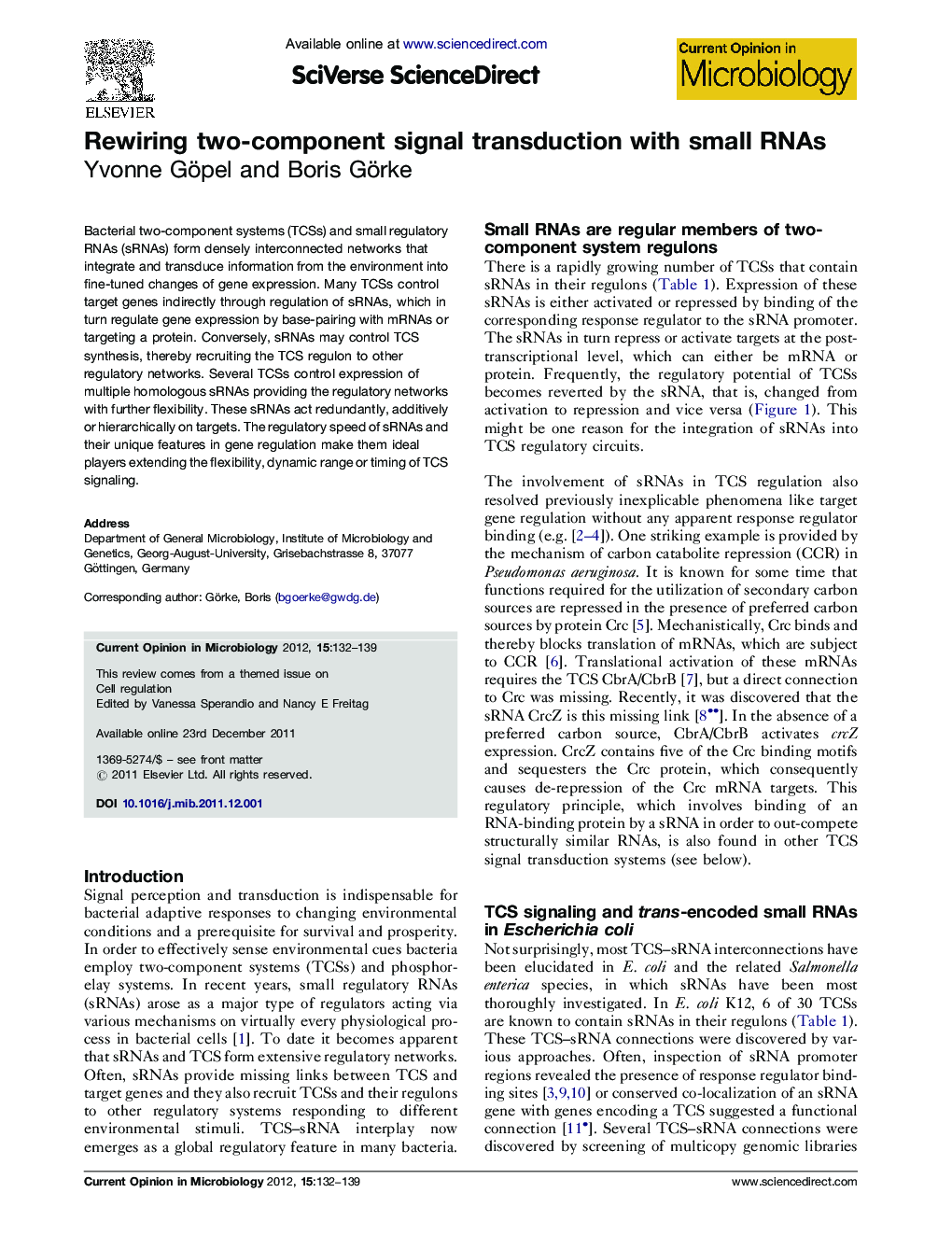| Article ID | Journal | Published Year | Pages | File Type |
|---|---|---|---|---|
| 3399141 | Current Opinion in Microbiology | 2012 | 8 Pages |
Bacterial two-component systems (TCSs) and small regulatory RNAs (sRNAs) form densely interconnected networks that integrate and transduce information from the environment into fine-tuned changes of gene expression. Many TCSs control target genes indirectly through regulation of sRNAs, which in turn regulate gene expression by base-pairing with mRNAs or targeting a protein. Conversely, sRNAs may control TCS synthesis, thereby recruiting the TCS regulon to other regulatory networks. Several TCSs control expression of multiple homologous sRNAs providing the regulatory networks with further flexibility. These sRNAs act redundantly, additively or hierarchically on targets. The regulatory speed of sRNAs and their unique features in gene regulation make them ideal players extending the flexibility, dynamic range or timing of TCS signaling.
► Many two-component systems (TCSs) control gene expression through sRNAs. ► Antisense RNAs represent a novel class of gene regulators employed by TCSs. ► Conversely, synthesis of a TCS may be controlled by sRNAs. ► Several TCSs employ multiple homologous sRNAs increasing complexity of regulation. ► sRNAs have unique features in gene regulation explaining their integration in TCS networks.
